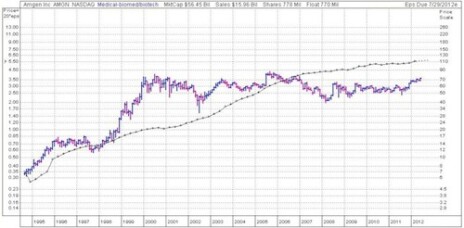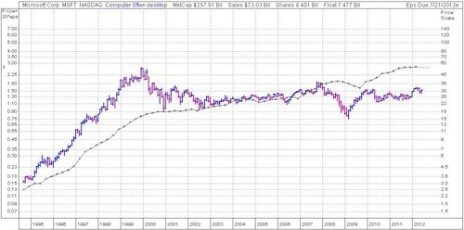An Investing Classic
Demand the Best
A Potential Winner
---
Editor’s Note: Our Cabot Tides market timing indicator for growth stocks has moved into green light territory, but which stocks should you buy?
Some important answers are in this classic Cabot Wealth Advisory from Cabot Market Letter editor Mike Cintolo. Mike makes it clear that you need a complete picture of a company, its fiscal performance and its stock chart before you actually buy the stock. It’s a good lesson to keep in mind as you evaluate the stocks on your watch list.
---
“I want to write today about something we mention often but never really explain fully: The fact that the company is not the stock. Most people confuse the two—they see a firm with a new product that’s beating earnings estimates and assume it’s a good growth stock. No! It might be a good company, but that doesn’t mean it is (or will be) a good growth stock.
“The same thing goes in the other direction; just because a firm is losing money or has had troubles in the past doesn’t mean the stock can’t be a leader or at least earn good profits for investors.
“’But Mike,’ you say, ‘I realize a stock can go up or down for a few weeks or even months because of the market or some temporary factors. But long-term, a good company with growing earnings will reward investors.’ That would make sense ... but in the market, it isn’t so!
“To see real examples of this, all you have to do is take a gander at these charts of solid companies from the last 10 or 12 years of trading. Notice the price bars for the stock, as well as the earnings line— the smoother line with circle markings. The earnings line totals up the company’s earnings per share for the past four quarters.
“We’ll start with Amgen (AMGN), one of the leading biotech firms in the world.
“Notice how, back in 2000, shares stretched just over 80 for a time before closing the year near 70. Earnings per share during the year 2000 totaled $1.05. Over the next six years (from 2001-2006), that earnings figure rose 12%, 18%, 37%, 26%, 33% and 22%—six full years of consistent and, for a time, even accelerating growth. Yet take a look at AMGN stock near the end of 2006—it was at 70, unchanged from the end of 2001 and 10 points below its peak in 2000! Now take a look at Amgen’s earnings and stock price today. Amgen’s earnings per share now stand at $5 ... nearly five times that of 11 years ago. But the stock is currently south of 75, still below its peak in 2000.
“Another example is Microsoft (MSFT). At the end of 1999, the stock was at 54 and the company had earnings per share of 69 cents. Growth did slow during the next few years, but the earnings line continued to push higher (with a brief dip in 2008), and now stands at all-time highs ... up at $2.70 per share, or nearly four times higher than it was at the turn of the century. Yet the stock is sitting down at 31, 43% below where it was back then!
“I could go on, as there are dozens of examples of firms with rising earnings over the years that produced nothing but stagnant or losing stock performance. And note this: Neither Amgen nor Microsoft were bubble darlings during the 1990s boom; while both got a boost for sure, they weren’t the Aribas, JDS Uniphases, Broadcoms, Phone.coms or America Onlines of the world. These were large-ish blue chips that had had big advances but continued to expand in the years ahead.
“So what happened? Why are the stocks of these companies going nowhere while earnings head north? It’s simple—investor perception of the company’s future potential has lessened significantly. And in the market, perception is reality; if institutional investors don’t believe a firm’s future is as bright as they previously thought, you can be sure they’re unlikely to buy any shares ... and if they own some, they’ll likely pare back during rally phases.
“All of this is why the growth investors at Cabot insist on combining fundamental research (which tells you about the state of the company—both current and potential) with technical studies of the stock itself (which clues you in to investor perception of the company).
“My fellow editor Paul Goodwin has dubbed this the SNaC approach—to get a truly big winner, you need a unique Story (preferably a new, revolutionary product or service), terrific growth Numbers (rapid sales and earnings growth, big profit margins and big earnings estimates) and a good Chart (with the stock in a major uptrend and outperforming the major indexes).
“Getting one or two of these is nice and, frankly, not that hard to do. But combining all three in a bullish market environment really puts the odds in your favor. And that is what you should strive for, especially if the nascent market rally morphs into an honest-to-goodness bull move.
“That is, you should strive to find the very best stocks and set-ups out there. Don’t go back to a stock you used to own “just because.” Hey, maybe your old leader still has a great story, terrific numbers and a resilient chart. If so, feel free to take a small position. But be sure to give it an honest evaluation.” ---
With markets showing real signs of life, our stock pick today is a stock that’s been in an uptrend for years, Monster Beverage (MNST). Monster is making a splash by marketing energy drinks, a long way from the natural fruit juices that were the core of the company’s brand when it was still called Hansen Naturals.
Monster energy drinks are the number two brand in the category (after Red Bull), and revenue just keeps growing as the company expands distribution to overseas markets ... especially thanks to Coca-Cola, a key distributor (and possible suitor for Monster, according to various rumors). The numbers for the latest quarter (revenue up 28% and earnings up 41% from the year-ago quarter) show no signs of slowing.
Yes, MNST has been in an uptrend since the middle of July 2009. Yes, the stock has soared from 14 to 76. Yes, it must slow or correct some time. But the stock’s combination of story, numbers and chart make it a perfect example of a great package.
Cabot’s experience tells us that a strong advance from a stock makes it more, not less, likely that it will continue to find favor with investors. So if the length and height of MNST’s advance makes you wary, just look at where it was at the beginning of July 2009, then in July 2010 and then in July 2011.
Care to bet against it again?
All the best,
Paul Goodwin
Editor of Cabot Wealth Advisory
Editor’s Note: Some investors can make good money in bull markets, and some are good at avoiding damage in bear markets. But to have great returns, you need to do both … like Mike Cintolo (VP of Investments for Cabot) has done as editor of the Cabot Market Letter. Since he took over at the start of 2007, Mike has outperformed the S&P 500 by 8.5% annually thanks to top-notch stock picking and market timing. To benefit from Mike’s advice—and to know when and what to jump on when the bulls re-take control—be sure to give Cabot Market Letter a try today.



